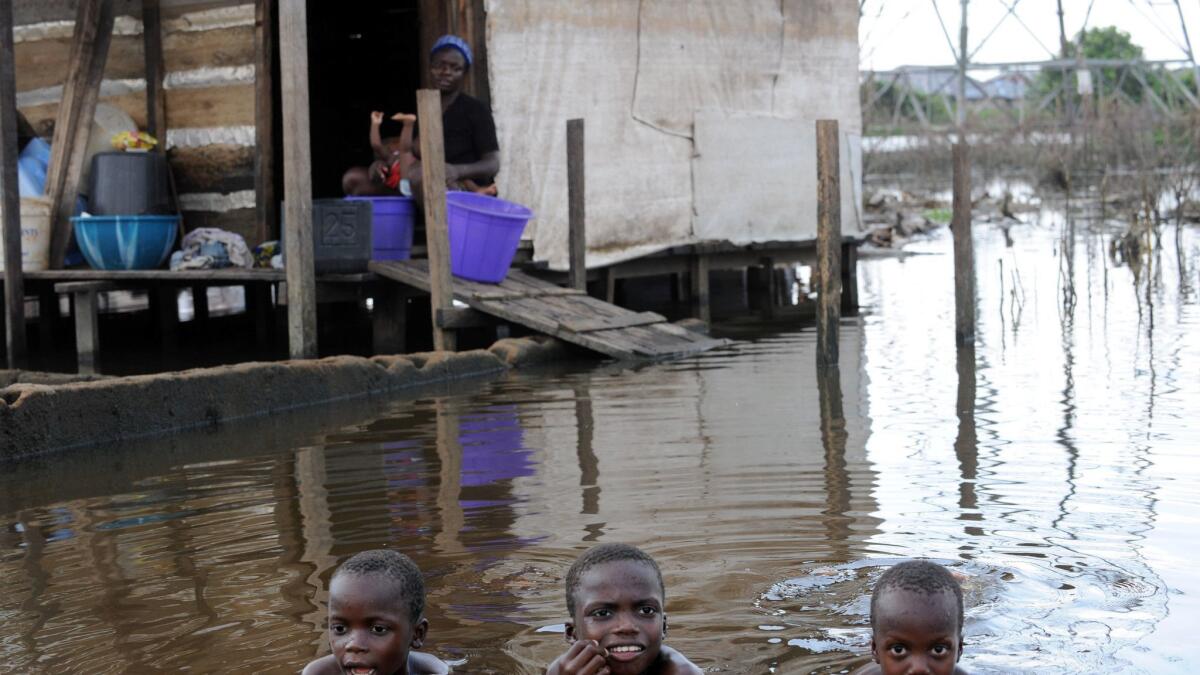Op-Ed: Foreign aid for family planning works. So why don’t we do more of it?

In the late 1960s, for a brief moment, population growth commanded the kind of political, popular and academic focus that climate change does now. But today, even as the population crisis grows more severe, it has largely fallen off the agenda.
Paul Ehrlich’s seminal book on the subject, “The Population Bomb,” was published in 1968, when there were 3.5 billion people in the world and the population was growing by about 2% a year, with about 60 million more births than deaths annually.
Early this week, the United Nations Population Division published its population projections to the end of the century. The report announced that the rate of population growth has slowed to about 1%, but today there are more than twice as many people (7.7 billion) than when Ehrlich’s book came out. That means that each year, 80 million more people are born than die — the equivalent of adding a new Germany to the world every 12 months.
Family planning is an investment: It pays for itself by reducing the cost of education and health services in a poor country with rapid population growth.
The report projects that world population will likely add an additional 2 billion people by 2050. Feeding 9.7 billion people won’t be easy, especially given the abundant evidence that climate change will negatively affect the food supply, including in areas experiencing some of the greatest population pressure. The population of sub-Saharan Africa, for example, is expected to double by midcentury, and that of Niger will nearly triple. Already more than 40% of infants in Niger are stunted — malnourished to the point where they will never reach their full human potential. Tens of millions of people will likely try to migrate from the region if drought worsens and crops fail.
Or consider Pakistan and Nigeria, both countries that doubled in size between 1990 and 2019. These increases not only have brought rising levels of human suffering, they have geopolitical implications for all of us. A poor country cannot build schools and train teachers fast enough to keep pace with rapid population growth. In turn, it becomes impossible to create enough new job opportunities. The 9/11 Commission Report emphasized that a large population of young men with poor education and few job opportunities is a recipe for “social turbulence.”
The U.N.’s latest report estimates a global population of 10.9 billion by the end of the century, but its projections are not written in stone. The report also points out that if families the world over had, on average, one-half fewer children going forward, the population by century’s end would have begun to decline, to about 7.3 billion. Conversely, if families have, on average, one-half child more, the population would reach 15.6 billion by the end of 2099. The huge difference that a half-child average makes could well determine whether our children and grandchildren live in a sustainable world, or one that is in danger of collapse as population pressure destroys the complex biosphere on which all life depends.
Enter the Fray: First takes on the news of the minute »
John Bongaarts, a respected American demographer, has pointed out that only 1% of all overseas development aid is spent on family planning, although it is one of the most cost-effective forms of foreign aid. A drop in family size facilitates better education, reduces maternal and infant mortality, facilitates economic development and sets the stage for more democratic government.
Family planning is an investment: It pays for itself by reducing the cost of education and health services in a poor country with rapid population growth. From the 1960s to the 1980s, the U.S. was the world leader supporting voluntary family planning. Many nations, including South Korea, Thailand, Colombia and Brazil, would be poorer and likely less stable without the support the U.S. gave to accelerate a decline in family size.
An important first step would be for the international community to move from investing 1% of foreign aid in family planning to investing 2% in it. Surveys show that hundreds of millions of women around the world would like either to have no more children or not to have more children in the next couple of years. Based on this fact, and our own experience working in many countries, we believe that increasing aid in international family planning could make that half-child difference.
Malcolm Potts and Alisha Graves are co-founders of OASIS (Organizing to Advance Solutions in the Sahel) at UC Berkeley.
More to Read
A cure for the common opinion
Get thought-provoking perspectives with our weekly newsletter.
You may occasionally receive promotional content from the Los Angeles Times.






